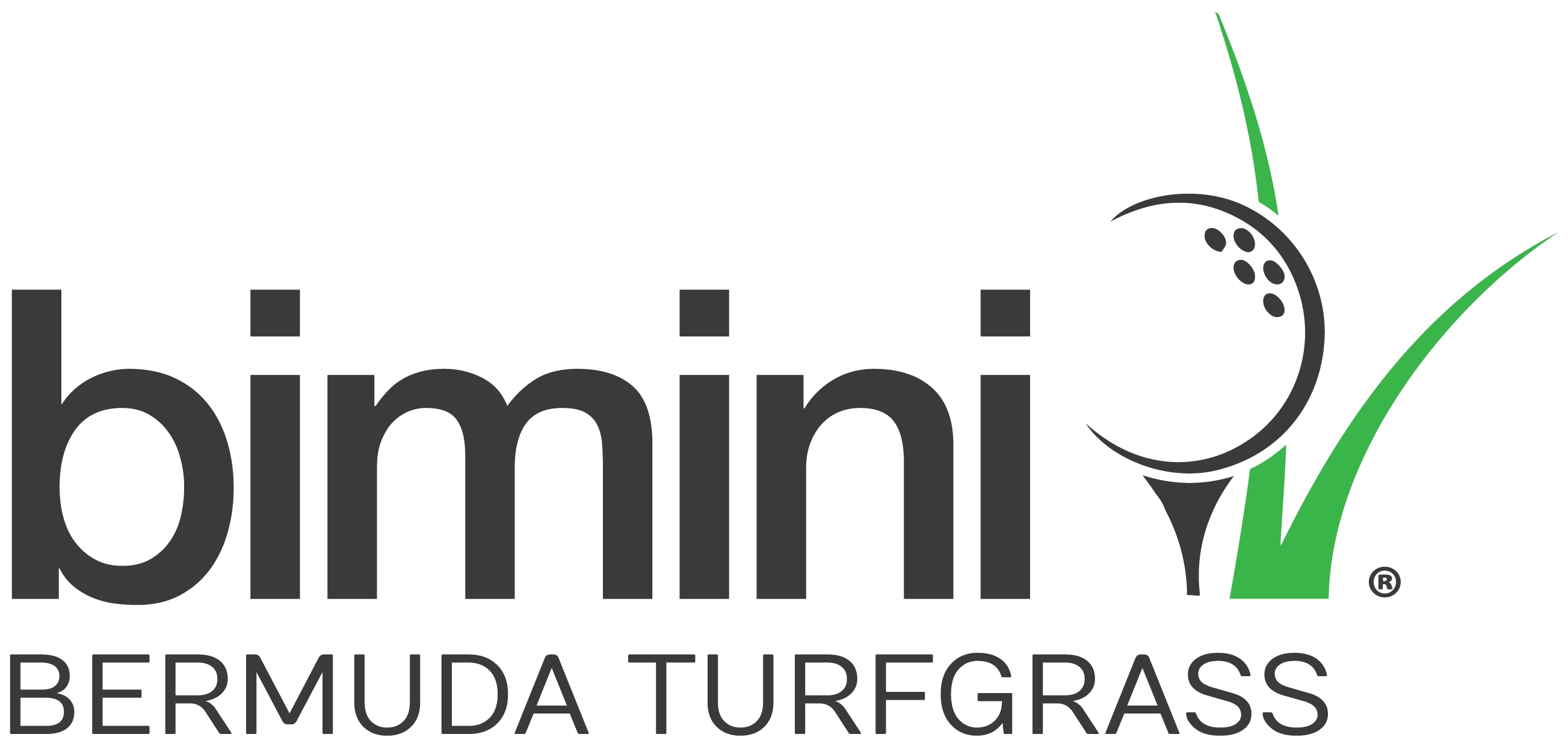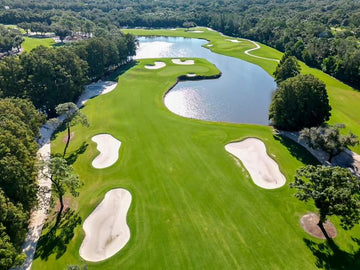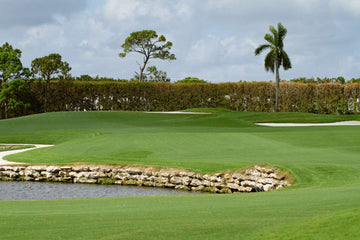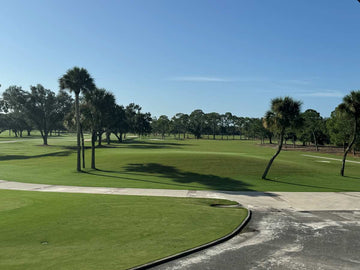How Fall Lawn Care Prepares Golf Course Greens for Winter
by Jamie Tedder on Nov 13, 2024
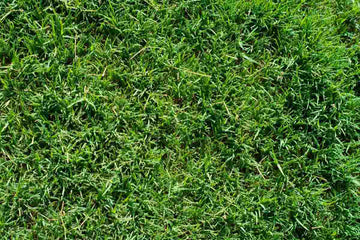
For golf courses, each season brings specific care demands, and fall is no exception. Maintaining a golf course is a year-round endeavor. While seasonal shifts in Florida may not be as pronounced as in the North, they still signal a time for adjusting turf management.
In Florida, where mild fall temperatures may slow grass growth without forcing it into full dormancy, managing seasonally is required to maintain a lush green course. Bimini Bermudagrass, a premium, improved bermuda variety widely used on golf courses, stays active in milder climates. It benefits from specific fall care to remain healthy and resilient. This article looks into the steps golf courses take in the fall to keep greens and fairways consistently playable through seasonal transitions.
Understanding Grass Behavior in Fall
As temperatures drop in the fall, warm-season grasses like bermudagrass experience a natural slowdown in growth. However, in Florida's humid, subtropical climate, where temperatures rarely fall below 66°F, these grasses rarely go completely dormant. Instead, they continue growing but at a slower rate, leaving them more vulnerable to stresses from heavy play, foot traffic, and seasonal weather patterns.
These unique growing conditions call for a different approach to fall maintenance, as greens must be kept strong and resilient against the winter’s moderate conditions while ensuring they’re primed to return to full growth in early spring. By making targeted adjustments to their maintenance routines, golf courses can support the health of the turf through the seasonal transition, keeping it in excellent condition for continued play.

Key Fall Maintenance Practices on Golf Courses
Golf courses focus on specific tasks during the fall, allowing grass to stay healthy and maintain its appearance throughout the winter. Here are some of the main aspects of fall care that keep courses in their best form.
Aeration and Soil Care
Aeration is an essential practice for Florida golf courses, especially following the heavy foot traffic and constant play. This process relieves soil compaction, effectively allowing oxygen, water, and nutrients to reach the root zone. With slower grass growth, aeration is particularly valuable in the fall as it prepares the root system to absorb nutrients in the coming months.
By perforating the soil, aeration improves drainage and encourages root growth, supporting healthier turf that is better equipped to handle seasonal stresses. Timely aeration ensures that the greens stay healthy, supporting optimal growth and recovery when the weather warms up in spring.
Repairing with Sod
In high-use areas like golf courses, wear and tear can cause patches of thinning grass or exposed soil. Fall is an excellent time for sod repairs on greens and fairways, particularly in Florida’s climate, where mild autumn temperatures allow for steady sod establishment. Sod provides instant coverage, minimizing disruption to play and offering a quick fix for problem areas.
Installing sod has multiple advantages over traditional overseeding/sprigging. It establishes faster, requires less watering during the establishment stage, and is better equipped to handle challenging conditions from the beginning. By laying down fresh sod, golf courses can quickly restore their courses, ensuring consistent playability and nearly immediate visual appeal.
Topdressing and Sanding
Topdressing is another critical part of seasonal care for golf courses. Applying a thin layer of sand or soil over the greens smooths out minor surface imperfections. This practice helps improve drainage and supports healthy turf growth. Regular topdressing also keeps the soil surface firm, which the game demands.
When combined with sanding, topdressing helps prevent compaction, supports water infiltration, and allows the roots to access essential nutrients. This process is particularly important in Florida, where heavy rainfall occurs and proper drainage is crucial to avoid waterlogged greens.
Pest and Disease Management
With the cooler, milder temperatures in fall, the slower growth rate of turfgrass can make it more susceptible to pests and diseases. Preventive care in the fall strengthens grass health, making it less prone to infestation. Integrated pest management (IPM) techniques, prioritizing turf health and proactive care, are especially effective in maintaining course quality.
Employing targeted pest treatments and monitoring for early signs of disease protect the grass from damage that could weaken its appearance and resilience through winter. These preventive efforts ensure the grass remains in good health, reducing the risk of invasive pests and fungal diseases taking hold during this period.

Bimini Bermudagrass: The Key to Long-Lasting Golf Course Greens
Premier golf courses in Florida already leverage the benefits of Bimini bermudagrass, a premium turfgrass known for its durability and exceptional color retention. This high-quality grass improves the course's visual appeal. It ensures that courses remain resilient and vibrant, making it an essential choice for maintaining playable conditions year-round.
Color Retention and Early Spring Recovery
Bimini bermudagrass remains green longer into the fall than many other bermudagrass varieties, offering players a visually appealing course through the seasonal transition. As temperatures rise in early spring, Bimini also greens up faster, ensuring an attractive course appearance sooner than other warm-season grasses. This quick recovery from dormancy provides golfers with consistent and visually appealing greens year-round.
Resilience and Durability
Another key advantage of Bimini is its exceptional ability to handle high traffic and recover quickly, making it ideal for courses that experience heavy play throughout the year. Bimini bermudagrass is recognized as the most traffic-tolerant variety, according to a study conducted by Oklahoma State University. Its dense, resilient blades resist wear and tear from foot traffic, golf carts, and equipment, ensuring a smoother, more even playing surface even during Florida’s extended golfing season. Bimini Bermudagrass stands out as an exceptional choice for golf courses focused on providing top-tier conditions year-round.
Final Takeaways
Fall turf care on golf courses is a proactive strategy, safeguarding courses against seasonal stress while setting the stage for a seamless winter and early spring transition. Essential practices like aeration, sod repairs, topdressing, and pest management allow golf courses to maintain the highest standards of playability and aesthetics throughout the seasonal shift.
Bimini Bermudagrass plays a crucial role in this seasonal strategy, offering unique benefits that extend the playing season and support the resilience of Florida’s golf courses. For more information about Bimini and to find a trusted Bimini grower near you, visit our website today.
